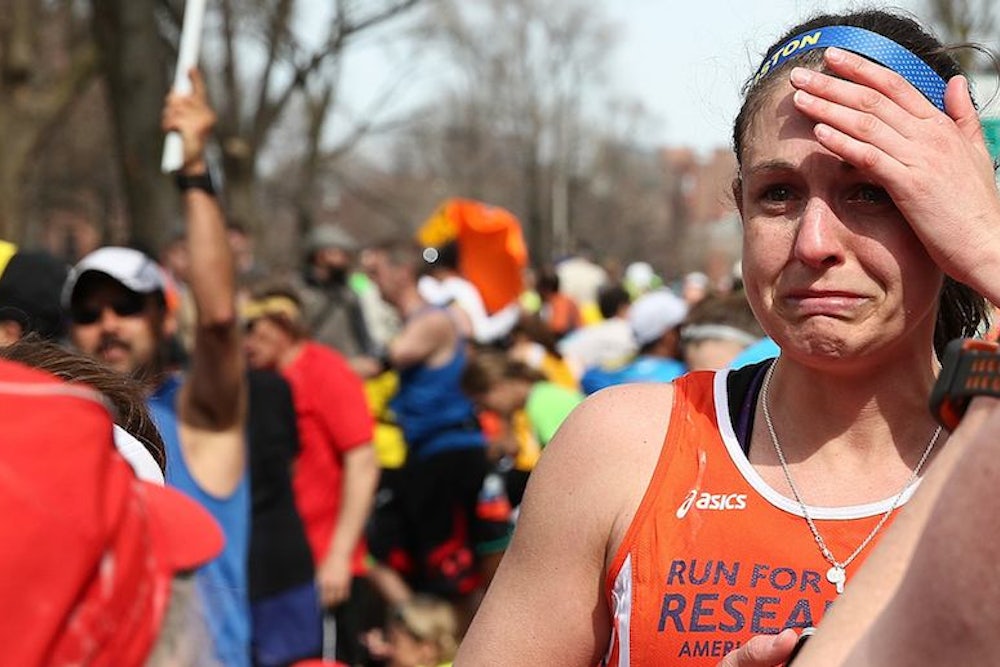The U.S. security establishment has, since September 11, 2001, gotten pretty good at making sporting events safe. About $2 billion per year goes into security at competitions, and the number rises to $6 billion in years with gigantic productions like an Olympics and a World Cup. Spectators have gotten used to being searched, frisked, and robbed of their water bottles when they walk into a stadium, all in the interest of averting something tragic. Empirically speaking, it's worked: We haven't had a major incident since the 1996 bombing at the Atlanta Olympic games.
Foot races, though, are a different story. They might not have bands of rabid sports fans, but they're wide open for someone who might want to do harm. And this afternoon, with the bombings at the Boston Marathon, the sports world suffered something that it's almost impossible to guard against.
"It's an open event, there's no access control, 26 miles of freedom," says Lou Marciani, director of the National Center for Sports Safety and Security at the University of Southern Mississippi. You can't deploy bomb-sniffing dogs over that long a route, and anyone with a backpack could blow themselves up. "Explosives are the number-one concern," he continues. “If anybody stays up at night running these events, it's about what happened just happened right here.”
The center was created in 2006 with grants from the Mississippi Office of Homeland Security to conduct research and training in sporting events security. Most of that, however, has focused on confined facilities, like a stadium: A recent book on the subject, written by the several of the center's staff members, doesn't even mention long-distance foot races. And despite their vulnerability, such races are only rarely targeted—an opening ceremony in Sri Lanka was bombed in 2008, and there was an attempted bombing in Belfast in 2005.
There are two reasons for that. One, crowded stadia are typically the most appealing targets for terrorists, offering the potential for the greatest damage with the smallest payload. There have been several bombings and foiled plots over the last decade at soccer games in Iraq, England, and Spain. And two, marathons are usually populated by amateurs, rather than high-profile professional athletes. "Marathons are recreational, and most of our emphasis is high-end people like baseball players, football players," says Marciani. "These are regular people... It doesn't make sense, so it caught us off guard here."
Other marathons will want to react somehow, to persuade runners and spectators that their event is safe. But the truth, made more frightening today, is that an 26.2-mile outdoor race can never be made entirely safe.
"You can lock down the finish-line area, or some part of the course where there would be large amounts of people, but that's everywhere along the way,” says Stacey Hall, one of the book's authors and a former Irish professional soccer player. “It's a soft target. When you talk about prevention, if you're gonna get hit, you're gonna get hit."
